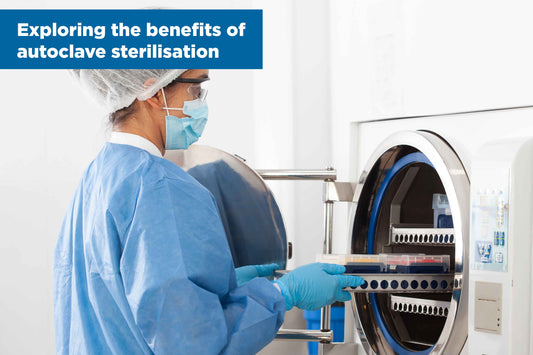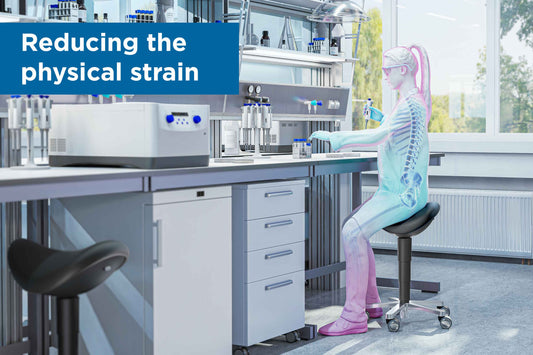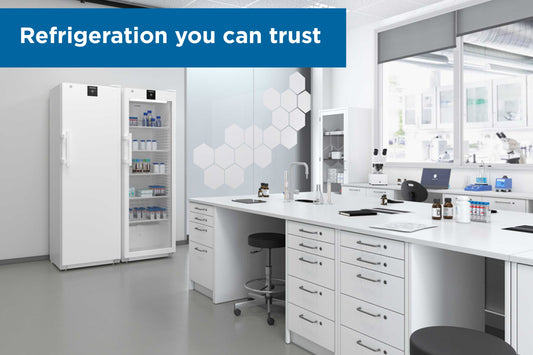Hygiene is the number one concern at any food factory environment and regulatory bodies rigorously audit standards for food companies to uphold.
Keeping production environments free of contaminants is a thankless task, but you cannot afford to let your guard down. Listeria can be a particularly difficult bacterium to control. But what is it and why is important to keep it out of your food factory? Here we look at this and give advice on how you can prevent it.
What is Listeria?
Listeria, formally known as Listeria monocytogenes, is a naturally occurring bacterium, present in the environment like soil, water, and decaying vegetation. It can also be found in the faeces of animals. Here's a breakdown of where Listeria commonly resides:
- Natural environments: Soil, water, decaying vegetation.
- Animals: Intestines of healthy animals, including cattle, sheep, and poultry (they typically don't show any signs of illness).
Listeria (Listeria monocytogenes) is different from some other bacteria because it can survive and even multiply in cold environments. This characteristic makes it a particular concern in food processing facilities with refrigerated areas for meat and vegetable processing and storage.
Maintaining hygiene is paramount in any food processing facility, and regulations are strictly enforced for good reason. Listeria monocytogenes, a bacterium commonly found in Listeria (often shortened to Listeria), poses a serious threat. Unlike E. coli where colder temperatures can slow its growth, Listeria can thrive in cold and damp environments, making it even more critical to implement robust preventative measures.
Why is Listeria control important?
Listeriosis, the illness caused by Listeria infection, can be particularly dangerous for pregnant women, new-borns, older adults, and those with weakened immune systems. It can cause serious infections, including meningitis and miscarriage. Listeria is particularly concerning because it can persist in food factories for extended periods, forming biofilms on surfaces and equipment. These biofilms can be resistant to standard cleaning and sanitation procedures, creating a constant risk of contamination.
How can you prevent the spread of Listeria? Teknomek’s top 3 prevention measures
A sensible first step is to prevent as many microbial contaminants as possible from entering any areas of handling food. We’ve seen many excellent examples of good hygienic practice, often reinforced through staff training and signage. However, unlike bacteria, humans are notoriously unpredictable, and risk can be reduced by implementing measures that make it even harder to avoid good hygiene. Below we share Teknomek’s top 3 Listeria prevention measures.
1. Rigorous hygiene practices
80 per cent of infections are spread by touch so rigorous hand hygiene is a given but also a risk as to how thoroughly it is adhered to across every shift. The following practices can help.
Handwashing
Handwashing remains crucial. Implement frequent handwashing protocols and ensure a proper handwashing technique is followed by all staff. Easy access to wash troughs, sinks, hand dryers and paper towel dispensers can be an effective solution to improving these protocols.
Sanitisation stations
Strategically place hand sanitiser stations throughout the facility, especially at entry and exit points for production areas that have a cold, damp, environment like chillers or high humidity or water use in cooking and preparation areas.
Footwear hygiene
Incorporate sanitising footbaths after boot washing stations. Change the sanitising solution frequently to maintain effectiveness.
2. Assess your environment and control it
Your environment is their environment, implementing environmental controls will help to reduce the risk. These include temperature management, moisture control and airflow management.
Temperature management
Maintain proper temperature control throughout the facility. Listeria thrives in cold, damp environments.
Moisture control
Address condensation and leaks promptly to prevent the formation of Listeria-friendly conditions.
Airflow management
Ensure proper ventilation to minimize moisture build up and potential airborne contamination.
3. Cleaning and sanitation procedures
Your cleaning procedure is your daily defense.
Cleaning schedules
Establish and adhere to thorough cleaning and sanitation schedules for all surfaces and equipment.
Listeria-specific sanitation
Utilise cleaning products specifically formulated to combat Listeria biofilms.
Verification procedures
Regularly verify the effectiveness of cleaning and sanitation procedures through swab testing and environmental monitoring programs.
Auditing your factory furniture for Listeria, what to look for
Root cause analysis of swab testing shows that furniture is a significant risk factor in any facility and crucially near the furniture where the food is being produced.
As such, the hygienic design of the furniture can dictate success or failure when it comes to an audit. Moreover, good design can speed up your cleaning SoP and make it much more cost effective and efficient.
Smooth, easy-to-clean surfaces
Opt for furniture with smooth, non-porous surfaces that can be easily cleaned and sanitised. Avoid furniture with crevices, dirt traps, gaps, or unnecessary folds where Listeria can harbour.
What do we mean by dirt traps?
Here we have a trolley - but the same principles could apply to any piece of furniture – this design makes it difficult to clean because it has multiple ‘dirt traps’ built in. There are many folds, gaps, seams, ridges, rivets, unnecessary ledges and even raised welds.
This particular trolley also features castors with bolts, which we will discuss in more detail later – often the bane of hygiene managers lives. Essentially anything that’s ‘fiddly’ and could harbour microorganisms constitutes a risk and there are many castors that are more hygienic and easier to clean.

Identifying potential trap points before you buy – it can make the clean down SoP so much easier and faster. The safest option – in every sense - is simply to avoid furniture which features the types of design features that make it difficult to keep clean.
Sloped surfaces for drainage
Standing water is a breeding ground for Listeria. Choose furniture with angled surfaces that promote proper drainage. Our wash troughs are a good example of this, the stainless steel one station wash trough is sloped at the top to improve drainage.
An example of poor drainage can be seen in this sanitising walk-through boot wash image. In this case, the drainage outlet is poorly designed meaning water cannot effectively drain away.

Sealed stainless steel 304L-grade or 316L-grade castors
Selecting furniture with sealed castors to prevent harbouring of bacteria and facilitate thorough cleaning is important . Using stainless steel castors is always more hygienic than using BZP castors.
Food-grade materials
Ensure all furniture in contact with food or food packaging is constructed from food-grade materials.
Don’t forget culture is important – collaborate to lower risks
Smarter choices and cross team collaboration at the procurement stage can significantly lower risks and save costs during the cleaning process. It isn’t always a clear-cut choice – for example a particular piece of furniture may save production time but increase clean down time.
Running financially aware checks that take account of both the initial purchase price and OPEX costs will enable you to use all your precious staff time more effectively. Some of the key functions to think about are procurement, operations and maintenance.
Procurement
Involve procurement teams in selecting furniture that prioritises cleanability and minimises Listeria risks.
Operations and production
Production teams should be trained on proper hygiene practices and cleaning procedures specific to Listeria control.
Maintenance
Schedule regular maintenance for equipment and furniture to ensure proper functionality and minimize the potential for harbouring Listeria.
Summary
Listeriosis outbreaks can have devastating consequences. Implementing a comprehensive Listeria control program that incorporates rigorous hygiene practices, environmental controls, and proper cleaning procedures is vital. Selecting furniture designed for easy cleaning and prioritising collaboration across teams will further strengthen your Listeria mitigation efforts.




